I ate my way through Flushing, Queens - the most authentic Chinatown in America
My adventure began in the gutters of Manhattan – its subway system.

The number 7 subway line is sometimes called the "International Express" because it connects Times Square to outer-borough neighborhoods with heavy immigrant presences.
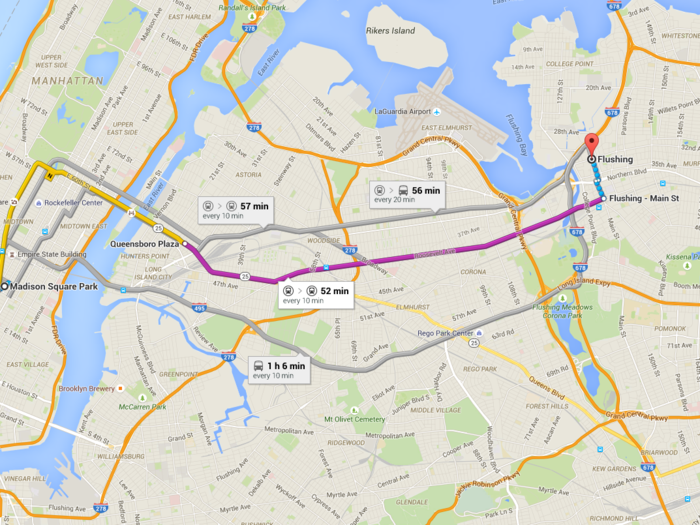
One hour and two podcast episodes later, I arrived at Mets-Willets Point station, on the western border of Flushing.
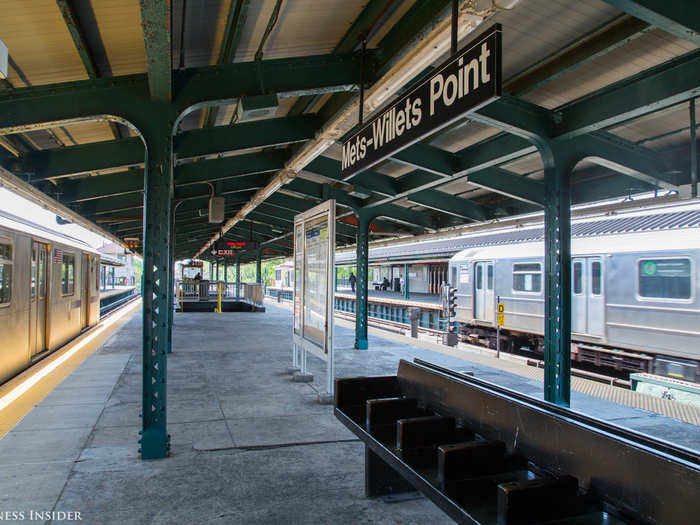
It's where the Mets play!
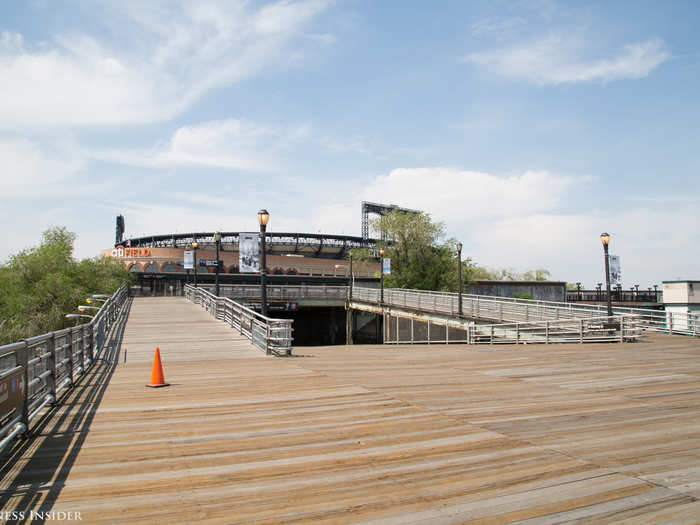
I marched across the bridge, over swamps, highways, and construction sites, to the heart of downtown Flushing.

It was another world.
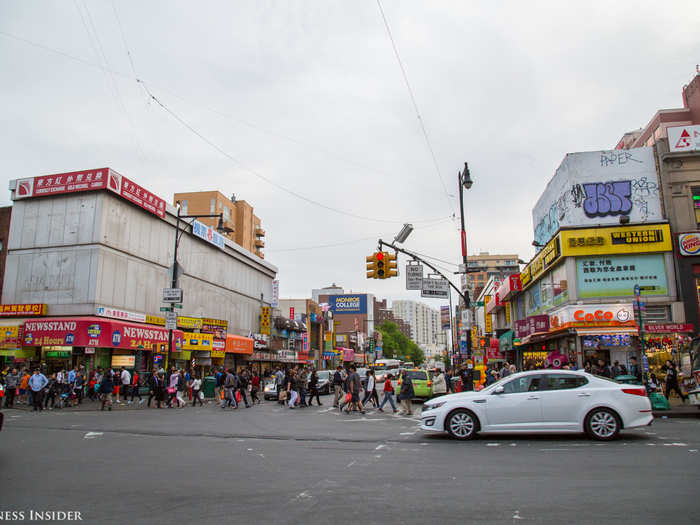
Bodegas, restaurants, cafés, and spas lined Roosevelt Avenue, downtown Flushing's main artery.
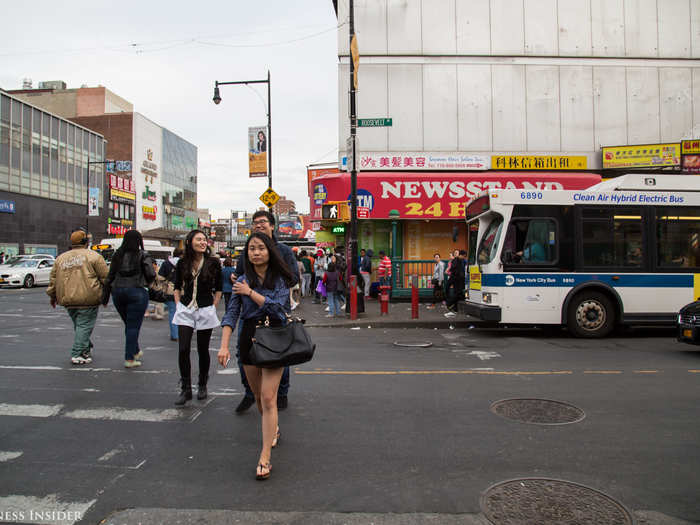
It became clear to me, almost immediately, how critical food is to the Flushing community.
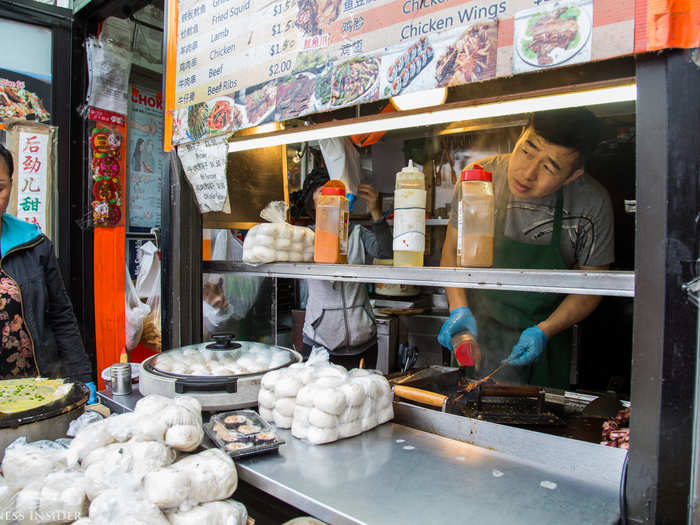
More than 30,000 people Chinese immigrants live in Flushing, making it the largest Chinatown in New York City*. With so many Chinese people living in one area, you can expect authentic tastes of their homeland.
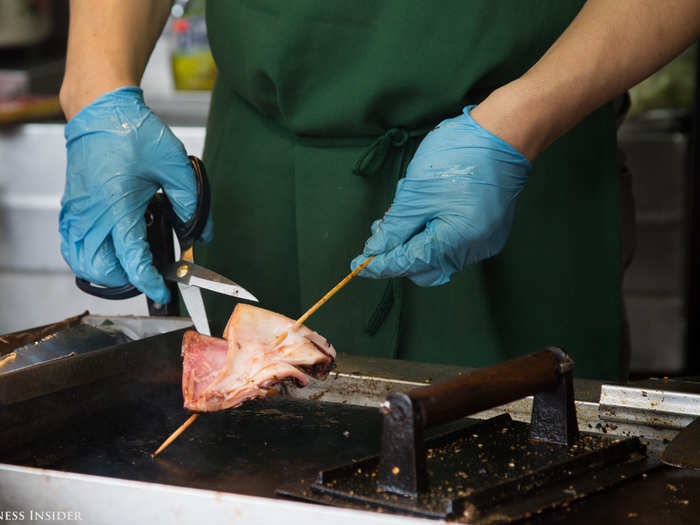
*Bensonhurt, Brooklyn, is actually the largest settlement of China-born people in New York City, but it's not so densely populated as Manhattan's Chinatown, Queen's Flushing, or Brooklyn's Sunset Park — which are considered the three Chinatowns of New York City.
Like squid on a skewer!
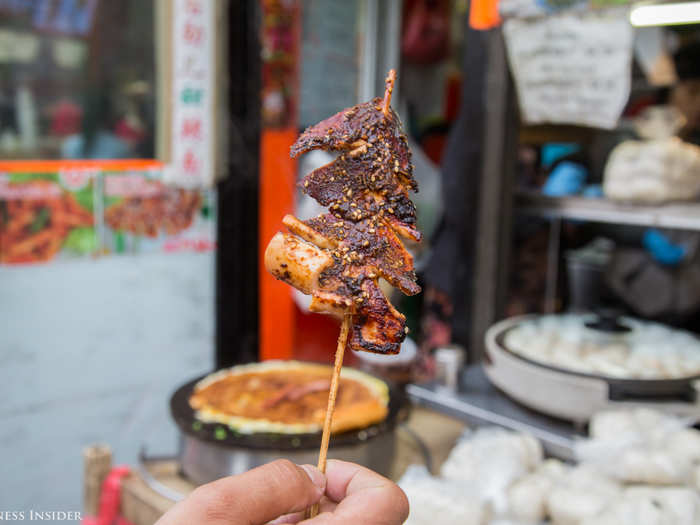
And these savory egg and scallion pancakes, which is typical street food in China.
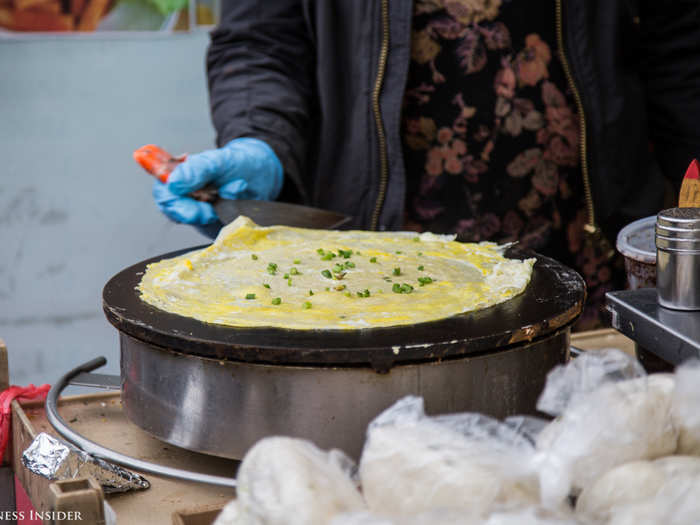
It quickly became my mission to eat the most popular, most unrecognizable flavors of China while in Flushing.
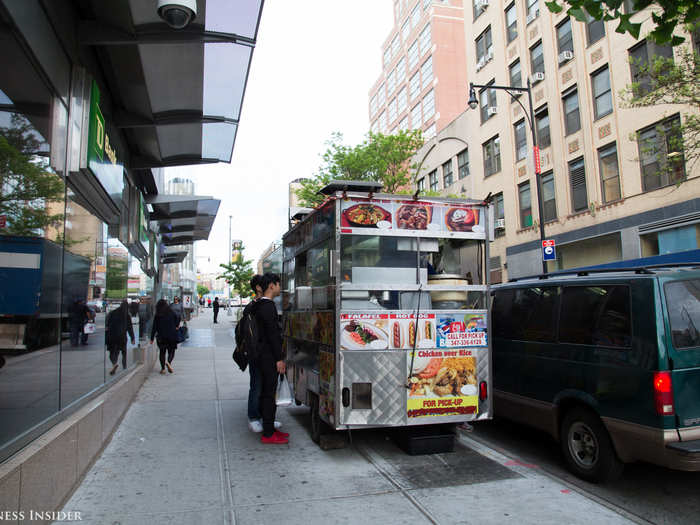
As I continued down Roosevelt Avenue, I noticed almost immediately that there were no bars in sight — just karaoke clubs.
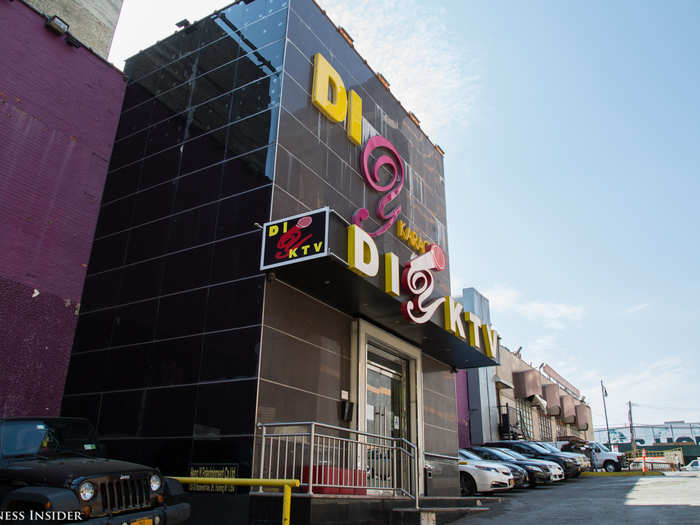
There was one drink in everyone's hands, however: bubble tea, a sweet, foamy, iced drink made with tea, milk, and syrup.
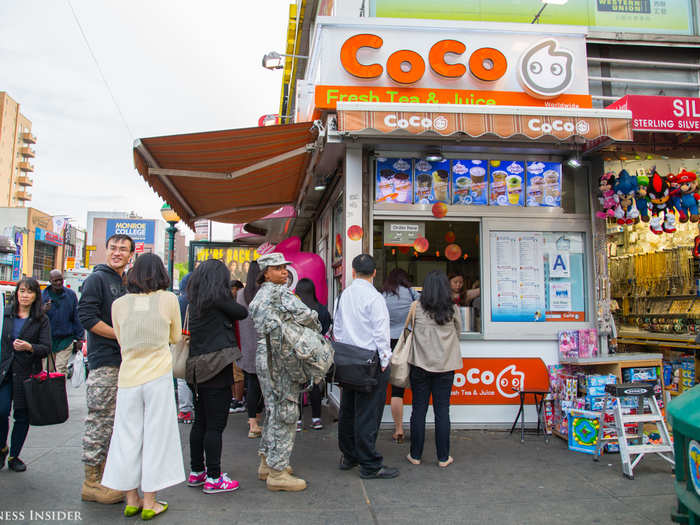
CoCo Fresh Tea & Juice had the longest line of any café. I saw some people take pictures with the inflated mascot.
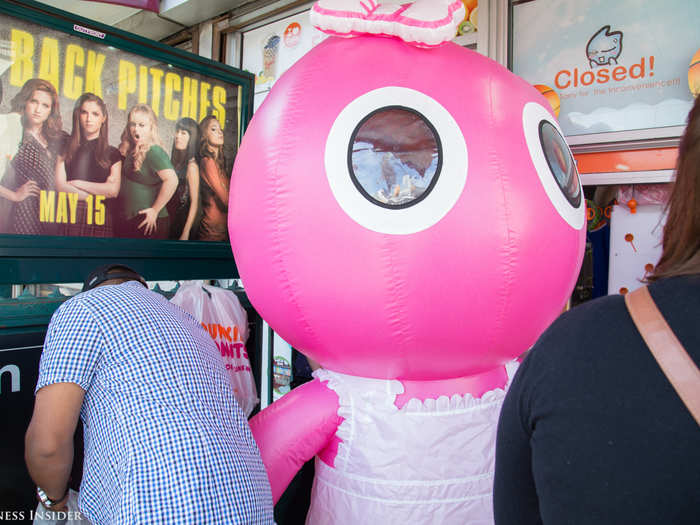
The woman behind me in line explained that you can order your tea with different percentages of sugar — 30%, 50%, 70%, or the "regular" 100% — and you can specify how much ice you want.

I ordered a bubble tea with 50% sugar, so it was sweet but not overly so. With each sip, I slurped up balls of tapioca, or "boba," that tasted plain and were extremely chewy.
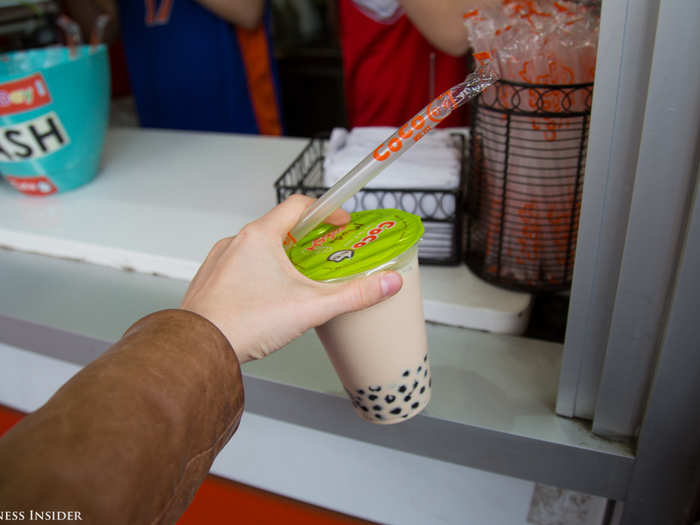
Drink in hand, I continued my pursuit.
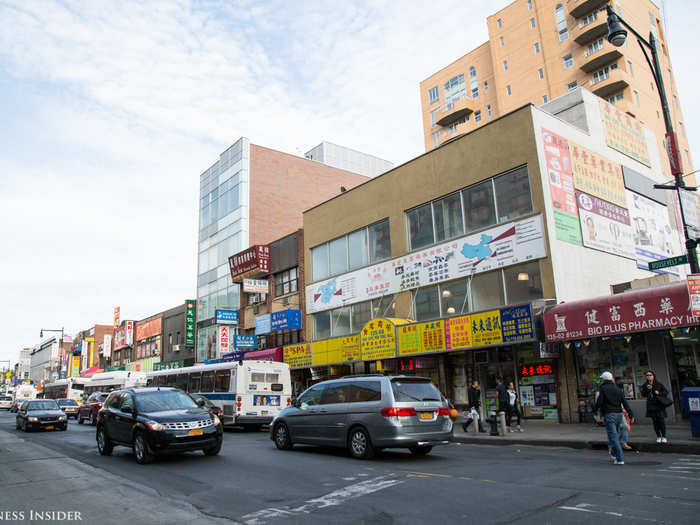
All the signage I passed was written in Chinese, although the stock photos in the advertisements mostly showed white people.
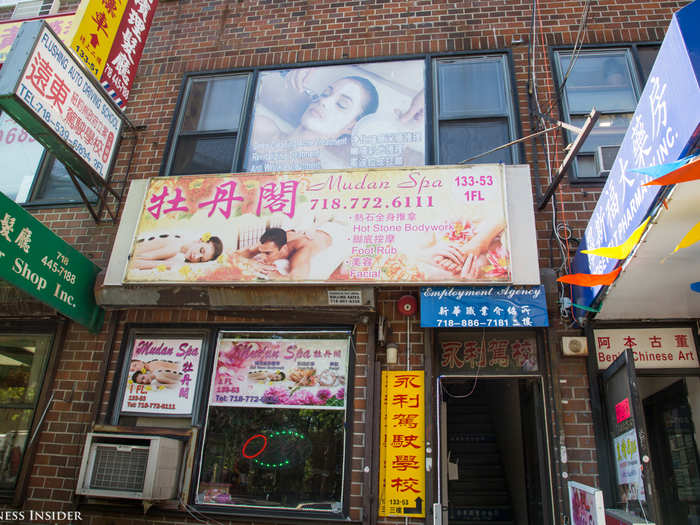
Large Chinese dragon statues guarded hotel entrances and parking garages.
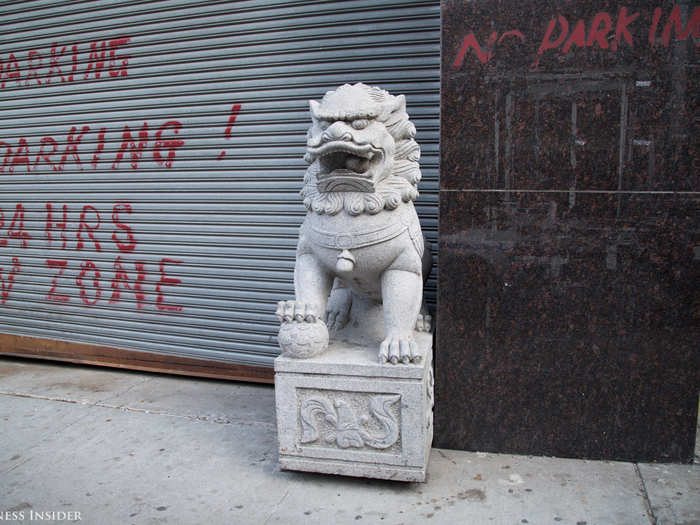
Pretty intimidating.
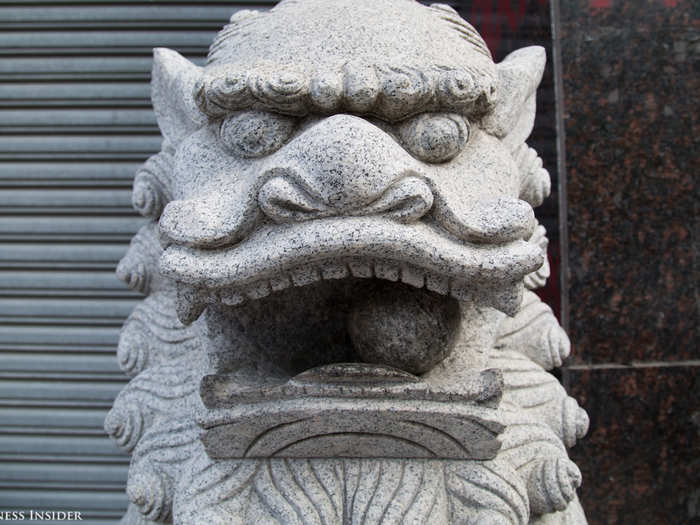
This food market caught my attention with its crates of herbs and fungi for sale.
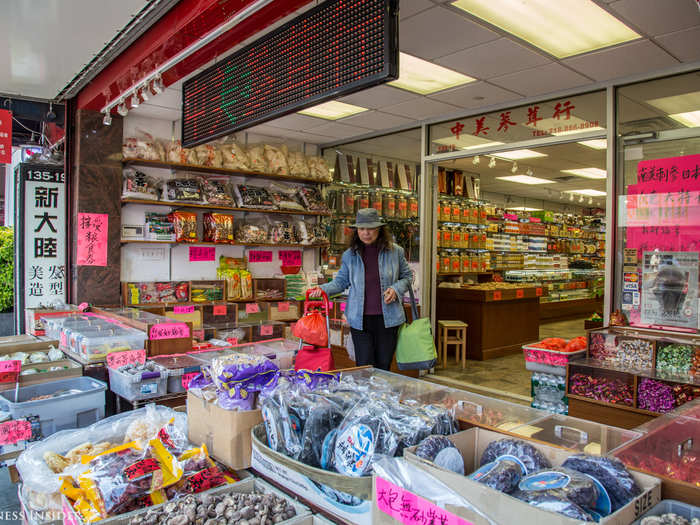
Cloud ear fungus, also known as black fungus, has a slippery yet crunchy texture. A coworker tells me its bland flavor absorbs the taste of whatever it is cooked with.
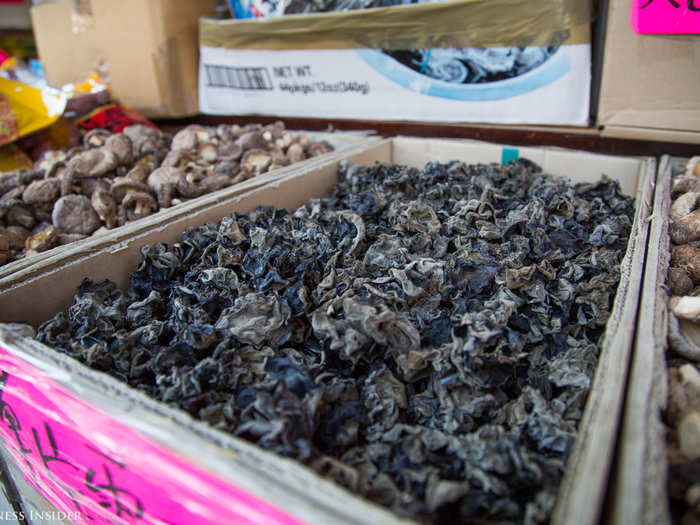
Silver ear fungus, or dried white fungus, may be used in a sweet soup or stir-fry for its medicinal benefits, such as healing dry coughs and reducing inflammation.
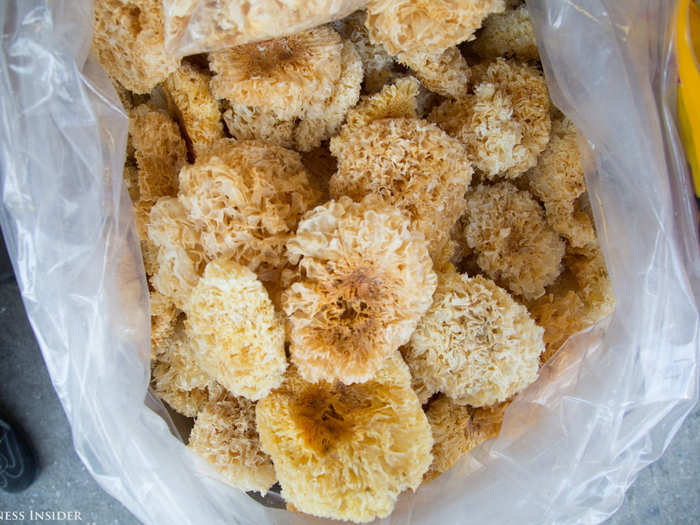
Dried sea cucumbers also have little taste, though they're very fishy in smell.
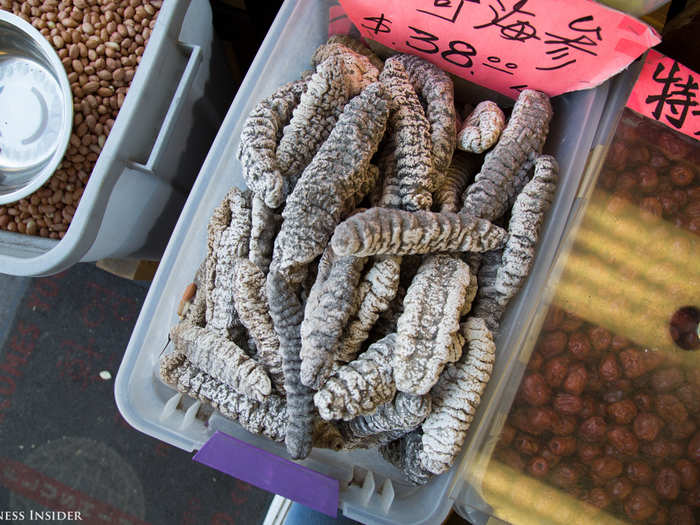
There was one item I recognized. Peanuts were everywhere!

They kept the really expensive goods inside, like these edible sea snails, called abalone, which cost nearly $400 per pound.
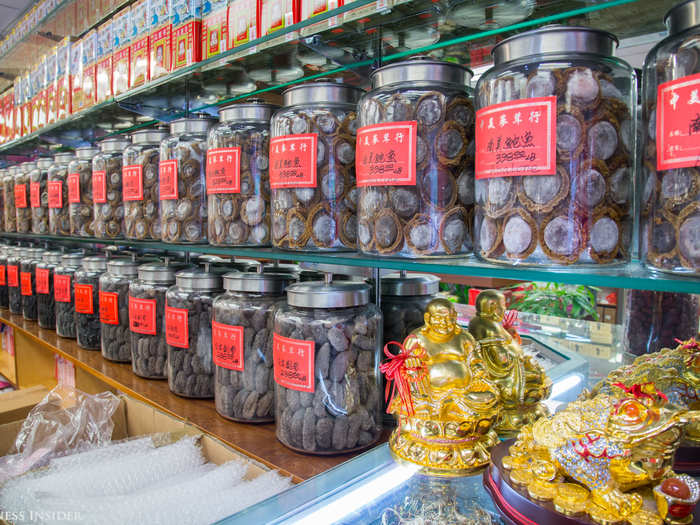
I was tempted to buy some Leechee tea buds, but I honestly wouldn't know how to steep them. My stomach grumbled and I decided it was time for a snack.
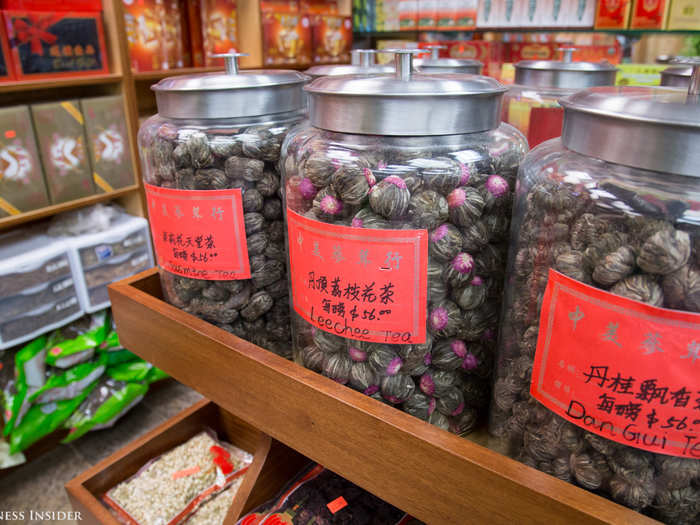
I passed one Chinese bakery after the next. This mousse cake depicting Hello Kitty, a Japanese pop culture icon, was super cute.
I stepped inside Tai Pan Bakery, a dreamy café with metal tables and chairs, pastel lighting, and a 20-foot buffet of pastries.
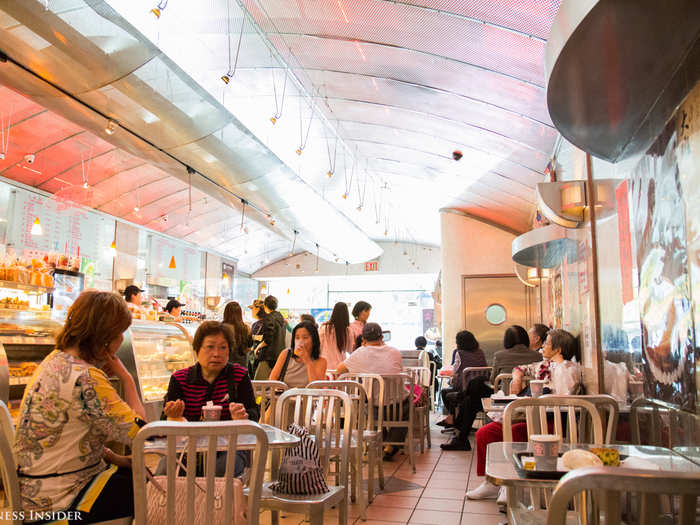
Here's my loot.
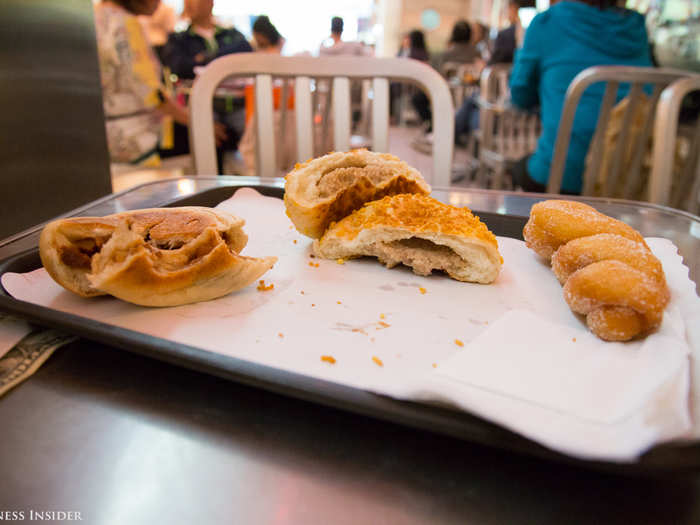
I tore the crispy pork bun in half and discovered a chopped meat and onion mixture, served cold, inside the bread. The dough tasted sweet like challah, but the meat's slimy texture was unlike anything I've tasted.
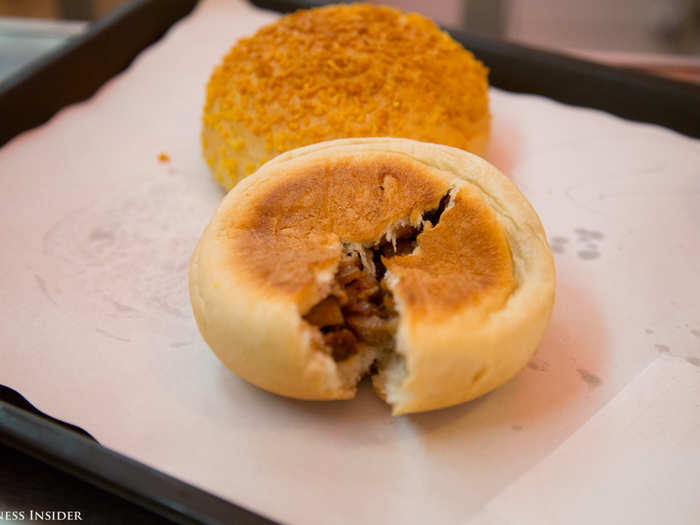
The taro bun was much more to my liking. The earthiness of the mashed taro root perfectly balanced the sweetness of the fried coconut, which was crunchy like sprinkles.
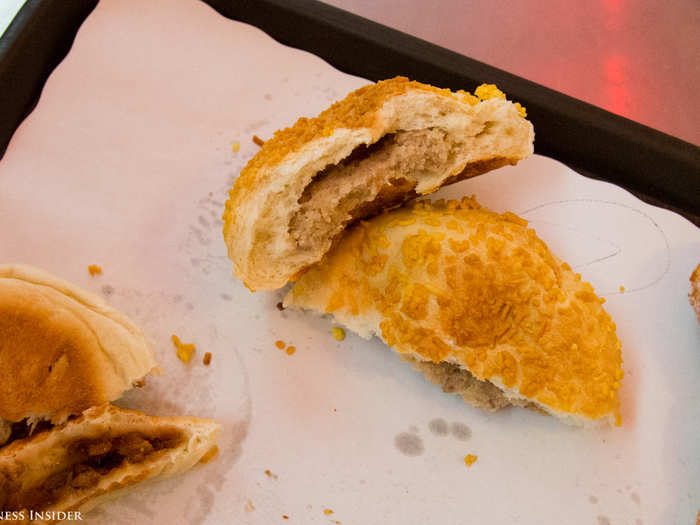
If I wasn't already reaching a sugar high, the Chinese doughnut put me over the edge. It was absolutely coated.
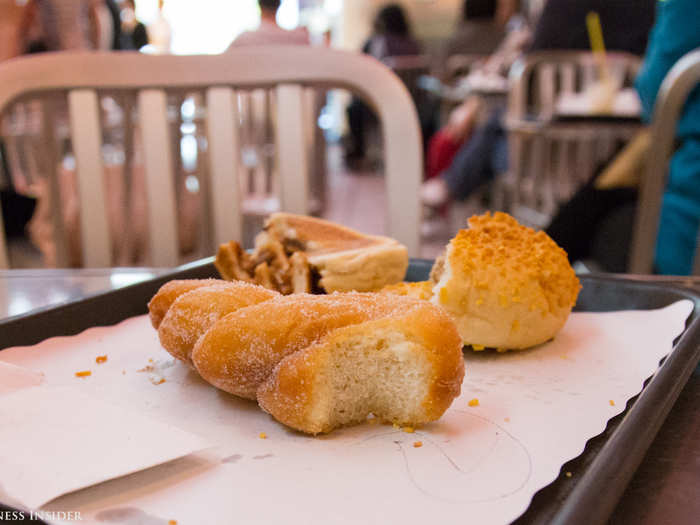
Look how little money I spent! Just $4 for three pastries.
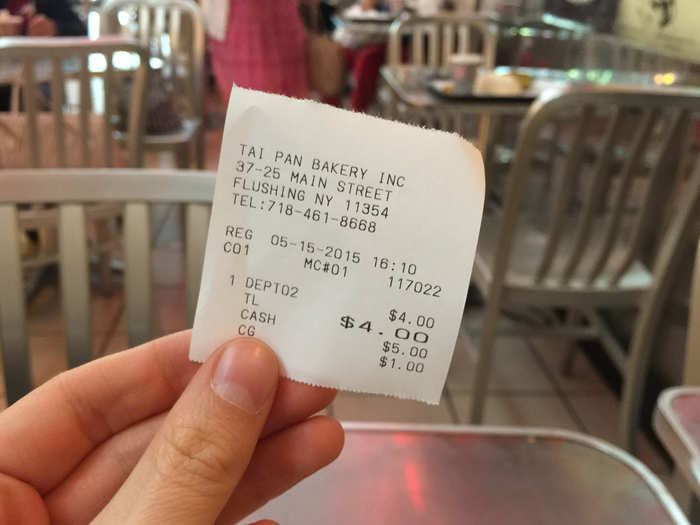
I passed a lingerie store ....
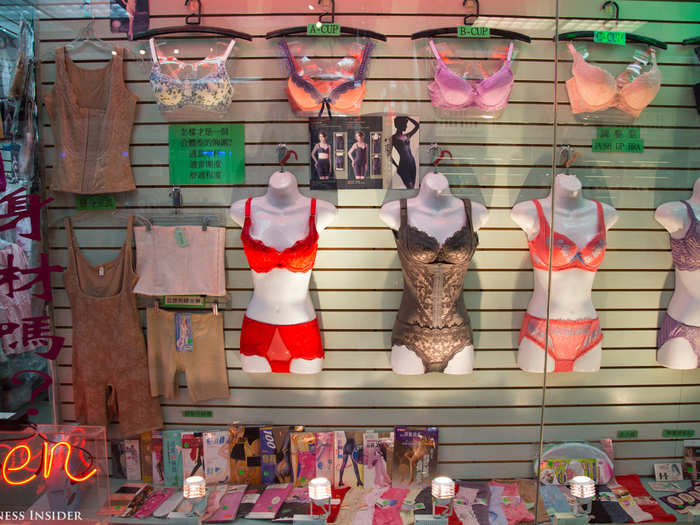
And a jade shop, where hand-carved pendants were on sale for upwards of $8,000 ...
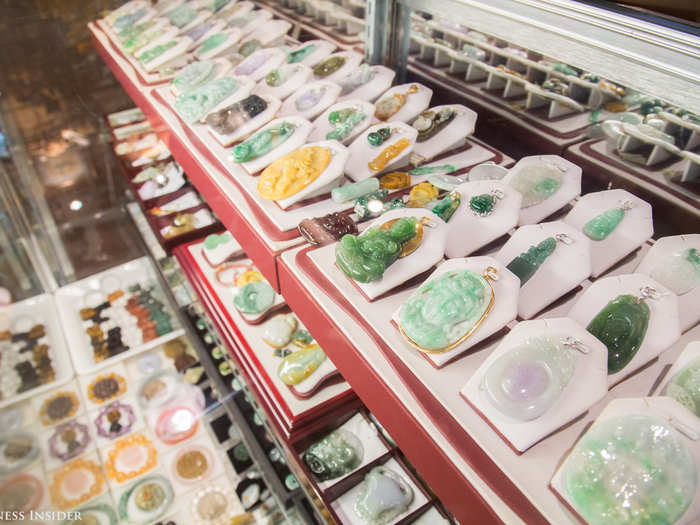
And found myself at the door of the Hong Kong Supermarket.
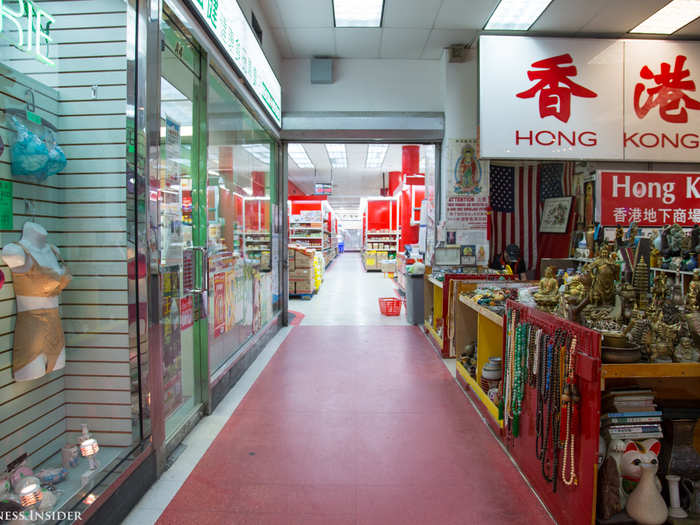
Just a few of the signs were translated into English. I shopped blindly.
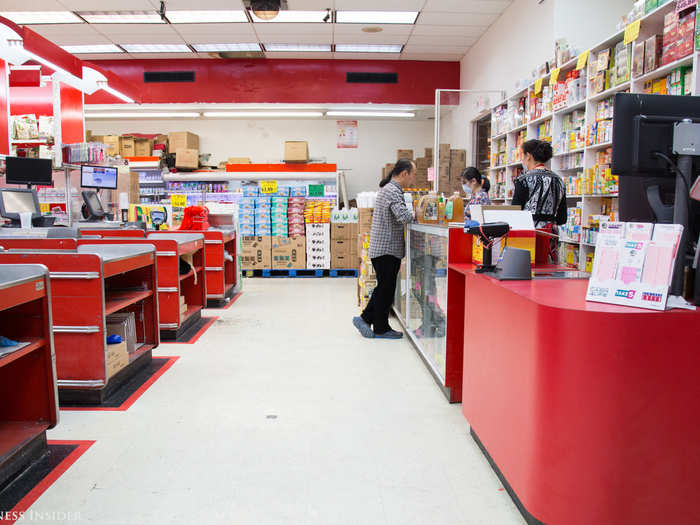
The produce aisle offered tons of foreign-looking ingredients. The crisp yet tender lotus root can be stir-fried, boiled, braised, steamed, or deep-fried.
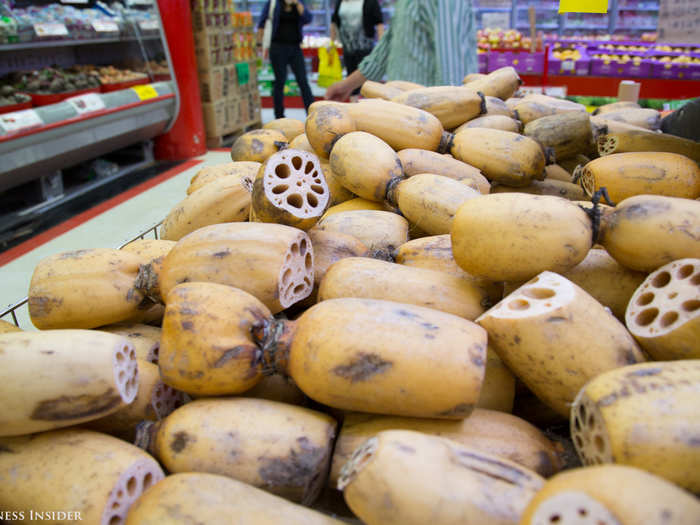
I first mistook these top-shelf veggies for white carrots, but they're in fact Chinese white radishes. Cubed and stir-fried, they comprise the popular dish chai tow kway.
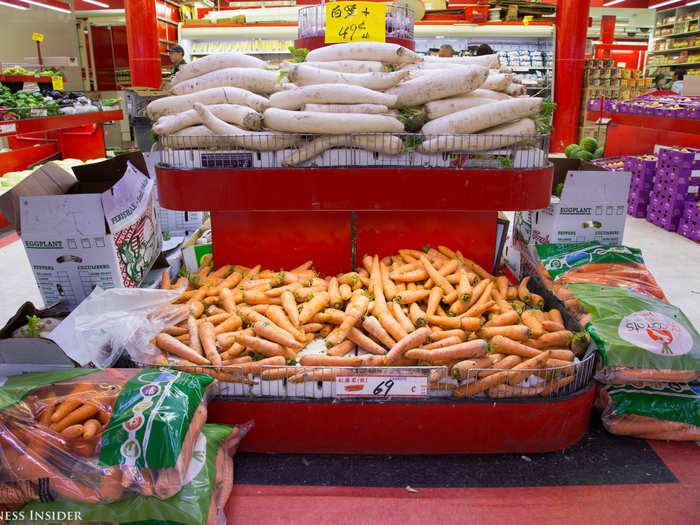
More peanuts.
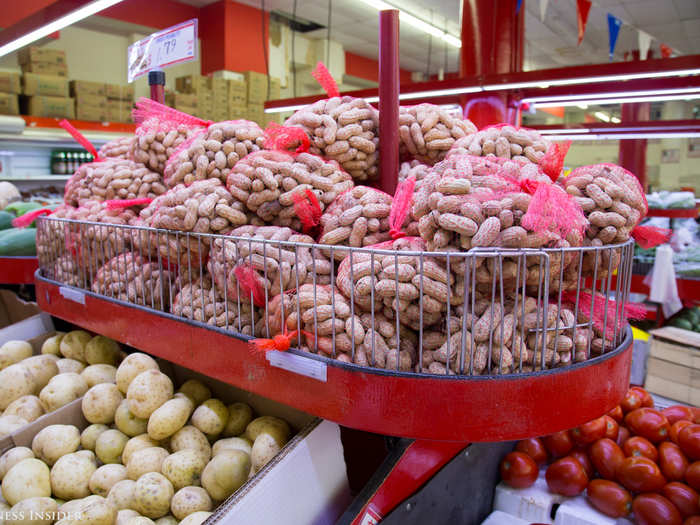
In the seafood section, I saw as many butchered fish as live creatures.
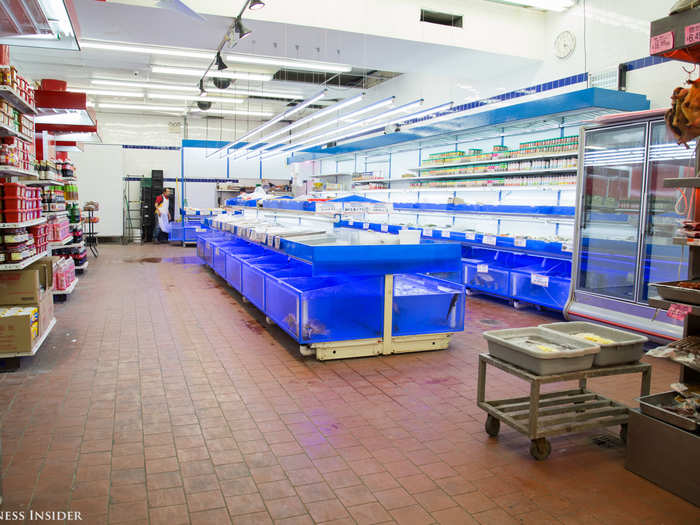
These critters lounged around in a tank, waiting to be taken home and made into soft-shelled turtle soup.
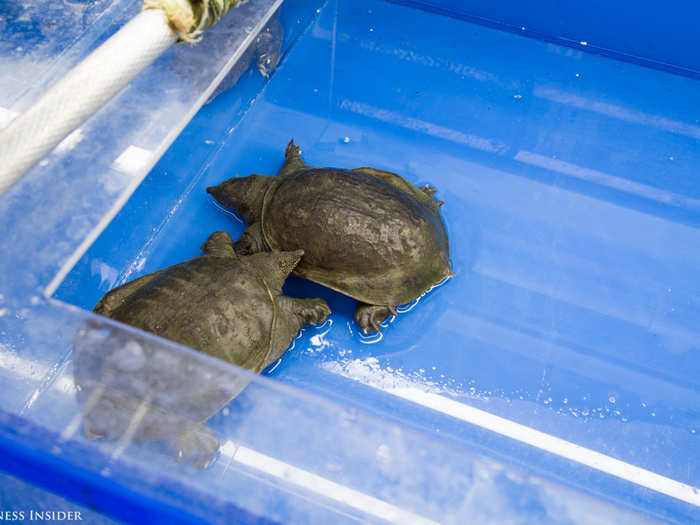
Prawn chips were a weekly special. Their salty texture is reminiscent of pork rinds.
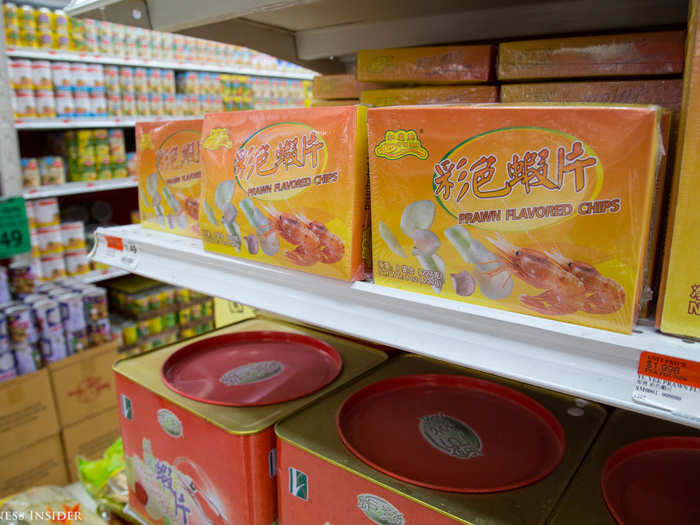
This entire aisle was dedicated to ramen, sectioned by variety, brand, and country of origin.
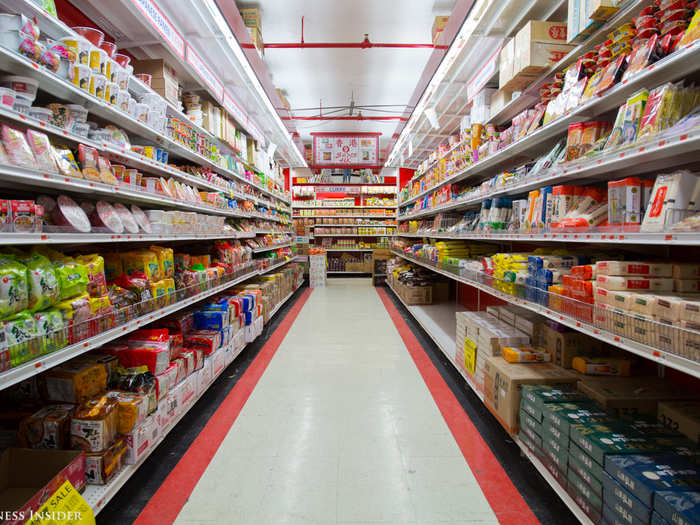
Mama Tom Yum instant noodles could be found under Japanese Ramen, whereas my go-to ramen during the college years were cataloged under their manufacturer, Sapporo Ichiban.
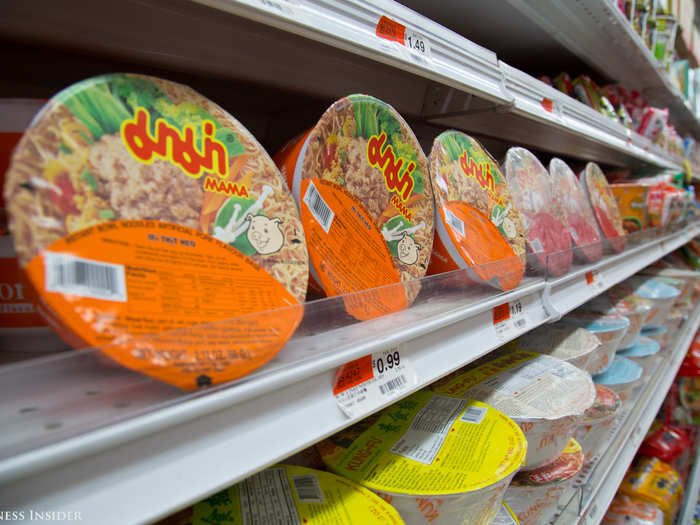
The candy aisle was unreal.
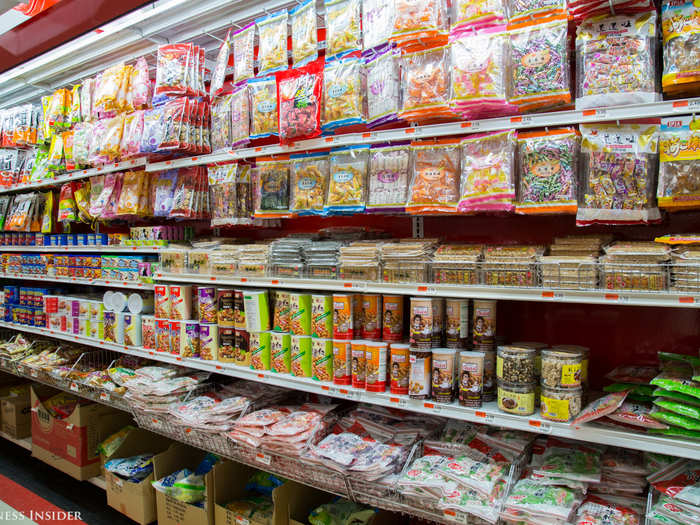
At first glance, these brown jellied candies looked like dog treats. Certainly an acquired taste, dried plums blend tart and salty flavors.
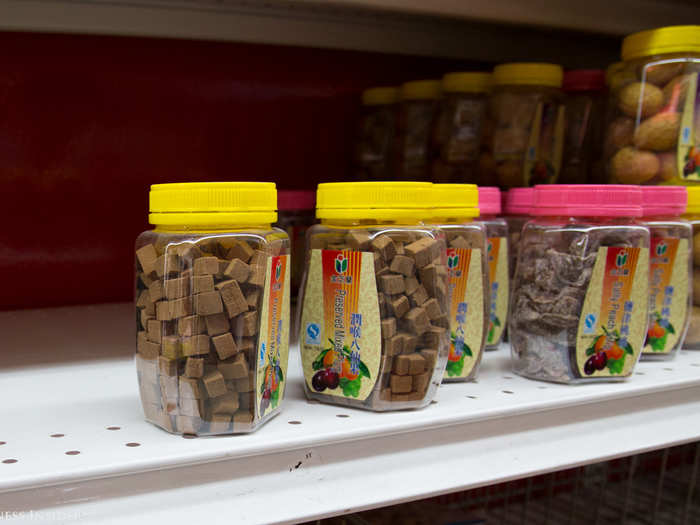
I learned there's a big difference between corn candy and candy corn.
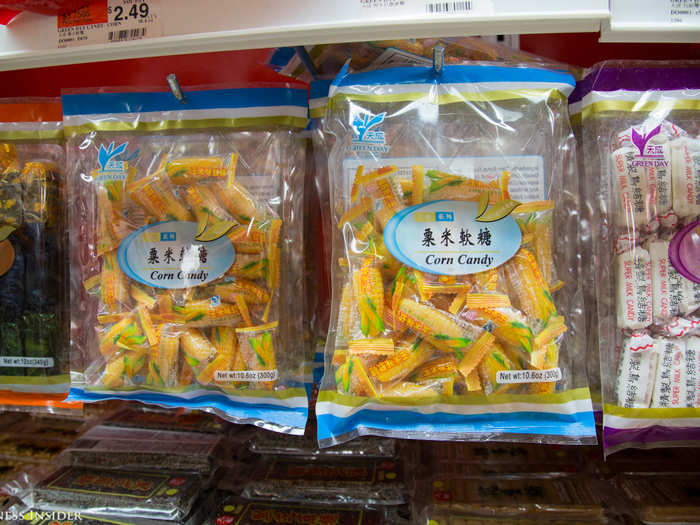
Kit Kats? Nope — they're sweet and sour haw flakes, made from Chinese hawthorn berries.
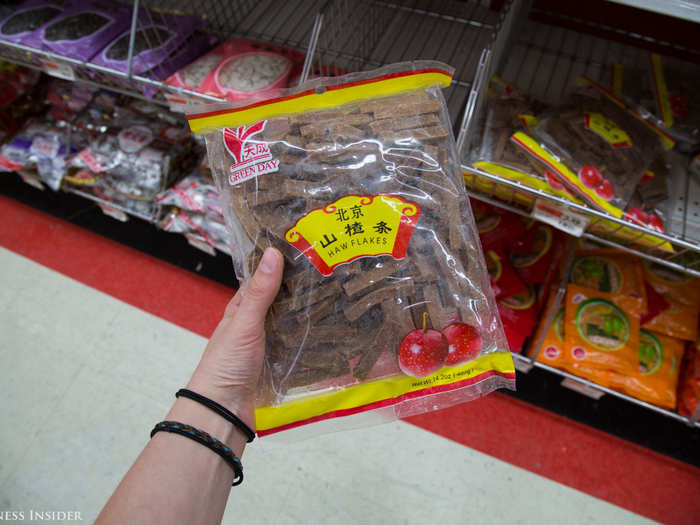
More peanuts!
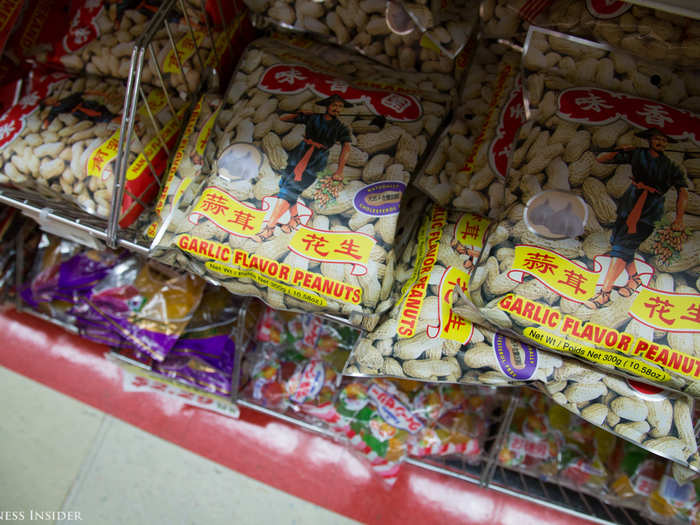
I opted for the spongy marshmallows that looked like miniature sandwiches, because the packaging appealed to me. It read: "In the busy living, give yourself delicious taste and relaxation."
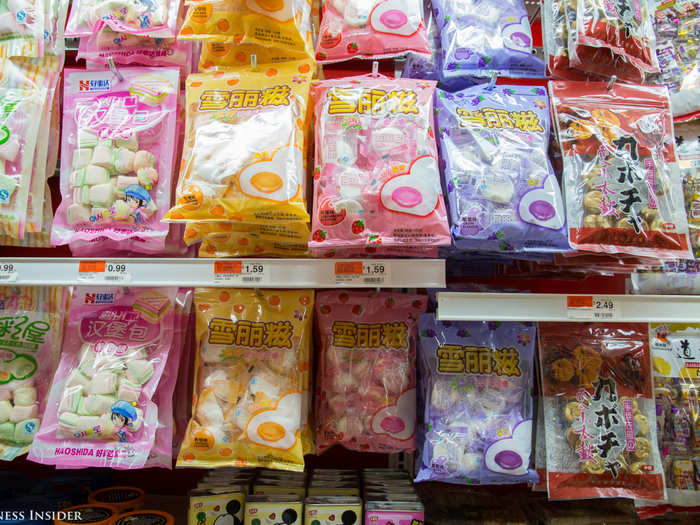
I paid $0.99 for my Chinese marshmallows — a steal! — and hit the streets again. After the shopping excursion, I felt ready to eat a real meal.
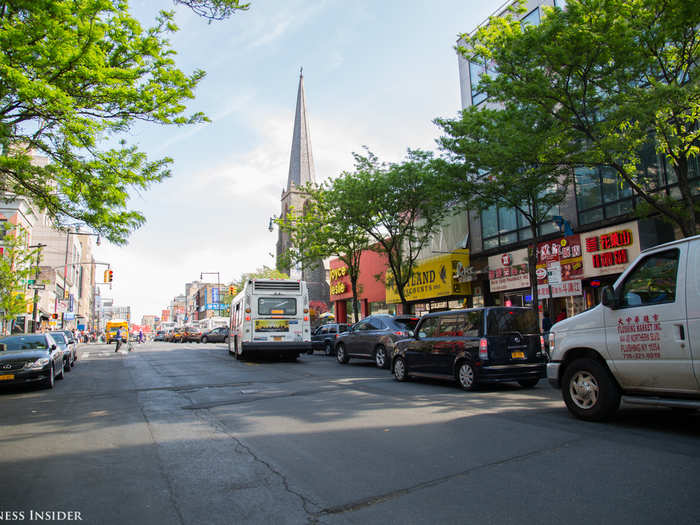
A friend encouraged me to try White Bear, a hole-in-the-wall dumpling restaurant across the street from the neighborhood's low-income housing facility. It had a four-star rating on Yelp, so I gave it a try.
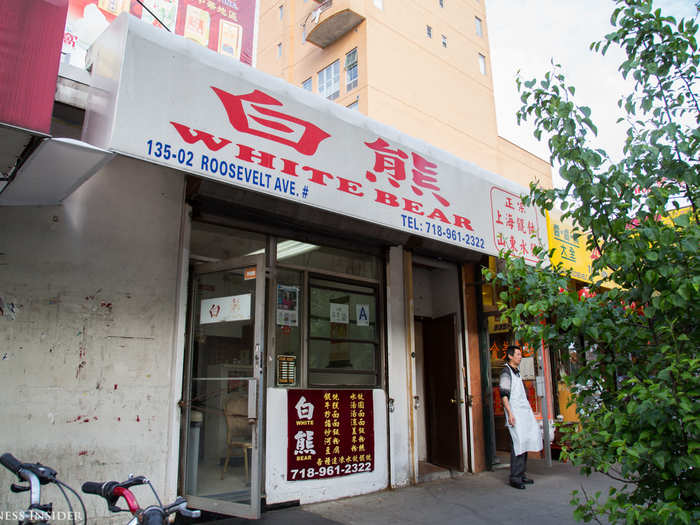
The interiors did not impress. Six plain tables were squeezed into the foyer, and there wasn't a single decoration to spruce up the white walls.
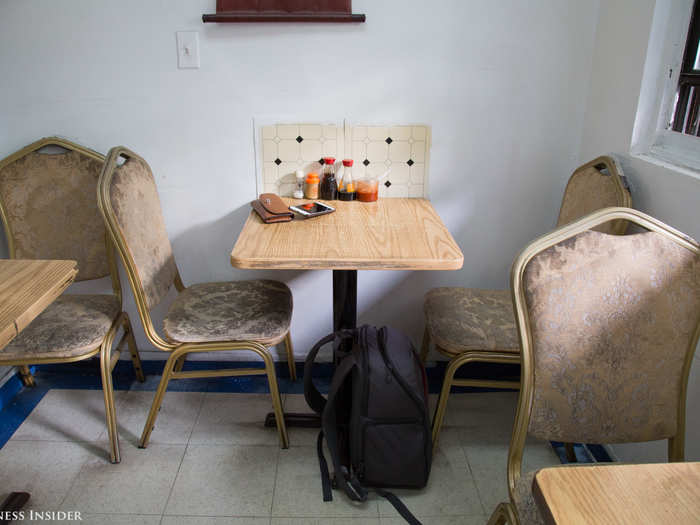
I asked for the No. 6, wantons with hot sauce, at the kitchen manager's suggestion. Seeing that it only cost $5, I worried this might be a "small plates" kind of place, and threw in an order of dumplings made with pork, shrimp, and sea cucumbers.
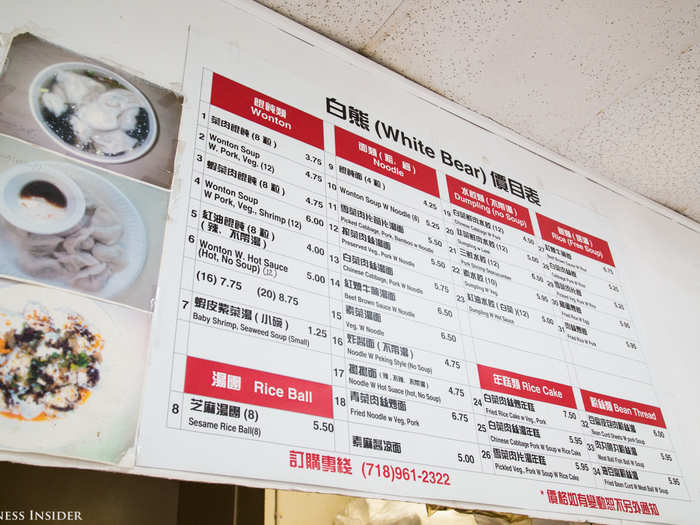
The spicy wantons arrived piping hot. I picked one up with my chopsticks — which was surprisingly easy to do, given the dumplings' slightly burned bottoms — and bit into the wispy skin and tender pork.
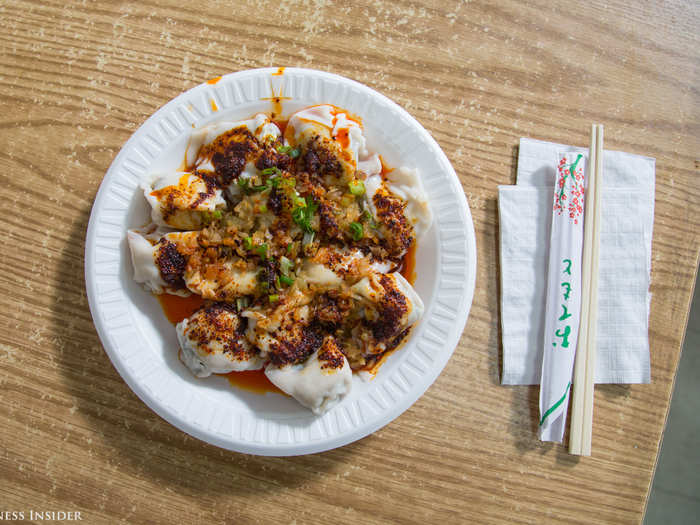
A woman sitting next to me recommended I swap out my chopsticks for a spoon, so that I could scoop up the chili oil dressing, roasted chilies, and pickled Chinese radishes in each bite. It was magnificent.
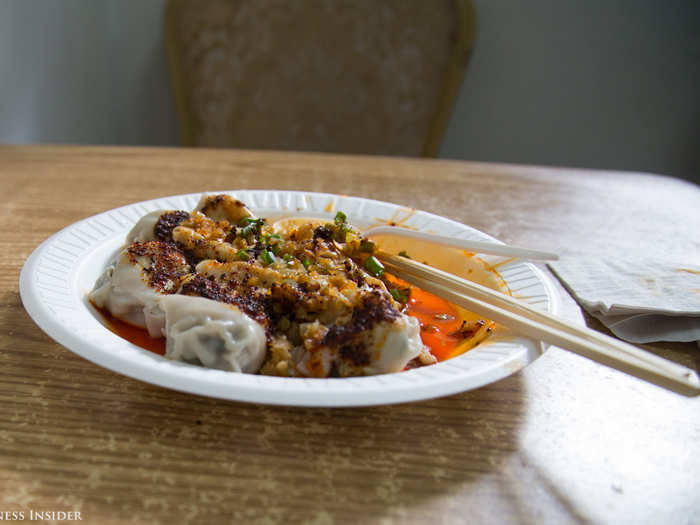
I definitely didn't need to order a second plate of dumplings, as the spicy wantons were more than enough, but I'm sure glad I did. These doughy pockets of pork, shrimp, and sea cucumber wontons packed a variety of textures and flavors.
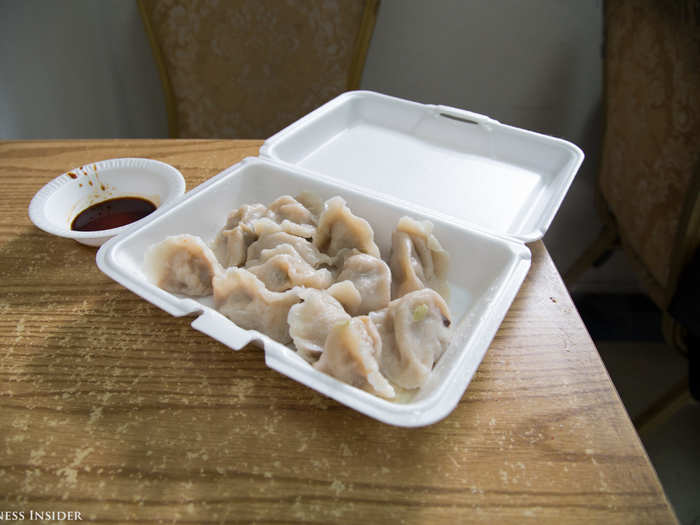
I left White Bear convinced I had found nirvana. The day had been quite the culinary adventure, topped off by a familiar yet unprecedented meal.
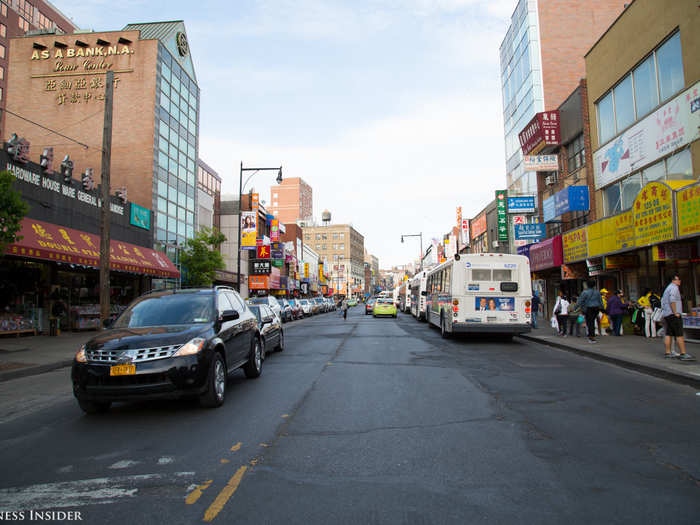
Still, I wasn't too full to skip dessert. I retrieved the marshmallow candies from my backpack.
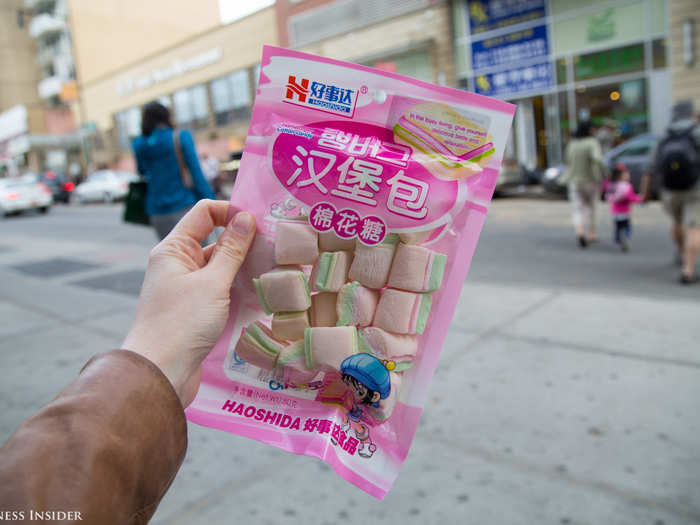
Some foods really transcend cultural boundaries.
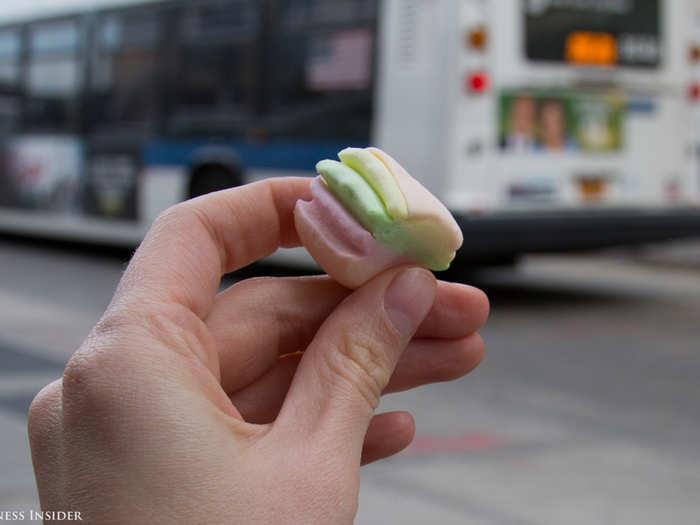
New York City is home to lots of "little" neighborhoods.

Popular Right Now
Popular Keywords
Advertisement